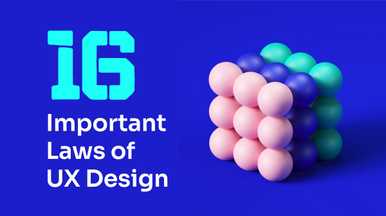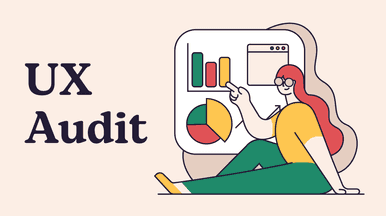We’re living in a world where software reigns supreme and there is a tool or application for every purpose. Widespread use of these tools makes many people’s jobs and lives easier.
The overwhelming success of Software as a service (SaaS) companies has encouraged more up-and-coming developers to jump on the bandwagon and get their products on the market.
The beauty of a SaaS business model is its accessibility and mobility. Anyone can create a web product or a mobile app and sell it to users as a monthly subscription.
However, with 15,529 SaaS companies since 2019, according to CardConnect, the market is incredibly saturated. Most of the software products people need already exist.
Therefore, wanna-be developers need to build software that will disrupt the current ecosystem and provide even greater value to customers if they want to thrive.
In this post, we’ll talk about the importance of product design and how it can determine the success of a SaaS business.
Why Product Design Matters for SaaS
Most of the SaaS companies work on a “product first” basis where leadership has a background in product and not in business or sales.
Whilst SaaS advertising is important, the main goal is to develop the best product possible and essentially let it speak for itself. Product-led businesses trust that what they are offering is good enough that people will purchase it.
Although offering a valuable product is always important, it is even more so when the entire go-to-market strategy revolves around it. If the product on offer does not hold up against its competitors, the business will undoubtedly fail.
Part of what can help a product rise to the top is its design, which refers to its usability and function.
Prioritizing your product design will help boost sales by making it more feasible for mass consumption. Below are the primary reasons how product design can achieve this regarding your SaaS business type:
Make navigation of the product easy
As the saying goes, the best ability is availability. If your product has a sophisticated code and algorithm, but people find it challenging to navigate through your features or make them work properly, then it’s as good as useless.
The beauty of the code should also translate into usefulness both in form and function. The product’s elements must be designed to appear on the platform, and all its features must work as intended.
It is also important to recognise that the majority of products on the market at the moment are either low-code or no-code.
Whilst software used to be only used by developers, this is not the case anymore. The masses want and need software, and small businesses take advantage of this regularly.
Due to this, as part of making navigation simple, creating something that doesn’t require technical knowledge or coding experience is incredibly important.
Create an attractive and persuasive product for investors
Although it is possible to bootstrap a SaaS business, it can make things harder. This is why many SaaS companies opt to get funding from investors.
The financial relief investors provide tends to give SaaS companies the peace of mind needed to develop the software according to their vision.
However, the best way to get funding is for your product to communicate to investors its value. And that can only happen if the product is well-designed and works the way it’s intended to work.
It’s one thing to have a great code or algorithm for your product. But a good-looking demo or a Powerpoint presentation is what ultimately sells. The VCs are most concerned about how the product will bring value as part of their growth, sales, and revenue portfolio.
They want to feel secure knowing that whatever they are investing in has potential. Arguably one of the best ways of doing this is by creating an attractive, easy-to-use product that shows investors the product is going to be a hit with customers.
Gain trust from users
Like investors, users won’t get on board with your product if they can’t use it. How easy to use your product is plays a huge factor in the decision-making process among consumers.
Not only does a well-designed product encourage customers to purchase the product, but it also builds trust. Consumer trust is incredibly important for any business and it is often something that makes a customer choose one product over another.
A reliable and well-designed product will help customers feel like their data is safe in the hands of your product.
Turn your product into a solution
The aim of creating a piece of software is to solve a problem many people have. The product design helps turn your code into an application that does this.
In order for a SaaS product to go from good to great, businesses need to turn their concept into a solution to problems people face on a regular basis.
Designing SaaS products: Where To Begin
As logical as product design is for SaaS businesses, implementing its principles into software is a different set of challenges altogether.
Striking the perfect balance between great code and product design is no simple task. Many nuts and bolts are involved in building SaaS software that realizes the founder’s vision and caters to the market.
Frequently, one is compromised over the other because the founder believes so much in the product’s strength and ignores the function that the design provides. It goes the other way as well — some companies focus on the visuals and layout without the substance of proper and efficient code under it.
To avoid this particular mistake, below are things you want to do before getting to work on your software:
Focus on pre-design
The pre-design phase deals with the purpose of your software and for whom it’s for. Whilst this stage sounds like just a stepping stone before getting into the important bits, this could not be further from reality.
People can use particular software for various use-cases. However, your goal is to build a product intended for a specific objective and is geared towards your customer personas.
This way, you have a target market for your product, and it is much easier to sell in the market or to investors.
Interviewing your target audience is a great way of gaining deeper insights into what users want from products. Focus groups where consumers can try the product and give feedback are also beneficial. It is good practice to ask consumers to fill out a feedback form at the end of each session.
Using all the information you’ve gathered, you can build your customer persona by narrowing down the people that feel strongly about your product.
Furthermore, this should also give insight into customers’ pain points with similar applications. The common concern they have is what your software should address. Build your software around this issue with interface and usability in mind.
UX design
User experience (UX) design shapes the layout and visual components of your software. Important things to keep in mind with UX design is that software should be intuitive and easy to use. In doing this, you eliminate user frustration and decrease customer churn.
UX design, however, is an ever-evolving process that starts with mind-mapping. This part of the process allows you to visualize your product for your designers, who are responsible for turning it into a practical application on the consumer side.
Throughout the entire process of designing a product, communication with designers and developers is crucial. If you can effectively share your ideas with designers, they can create a paper-based (low-fidelity) prototype of your software, including mockups.
After you test the usability and make suggestions, designers will then develop the computer-based (high-fidelity) prototype. Additional testing will take place to identify if everything is working correctly.
Finally, a good idea is to create a knowledge base covering how to use the product. This will be the first thing users look for, before contacting customer support, if they are struggling. Therefore, getting this right is vital.
Instead of trying to do this yourself, hire a UX writer to create clear and detailed copy for your future customers. The key to a great knowledge base is to convey your message in a concise but compelling manner. Your writer’s goal is not to bore users with technical jargon that would alienate them away from your business.
UI design
While appearance isn’t everything, it is a vital component of SaaS software. How the application looks and functions will play a huge part in its success or failure when it reaches the market.
Therefore, user interface (UI) design should not be ignored. UI design is where designers build a software interface for usability. The goal is not to make the dashboard look visually pleasing — it’s about helping users perform tasks and solve their problems. The easier it is to achieve these, the better the UI design is.
Designers in this process must have a UI kit containing fonts, icons, HTML/CSS files, and other components to design the interface. Using a suitable color scheme, font face, and icon sizes will shape the kind of experience users will have on your platform.
In House vs. Agency: How To Pick The Right Designer
Every SaaS company will require the help of a product designer and one of the biggest questions is: should you hire an in-house team or outsource to an agency?
Unfortunately, there is no simple answer to this question and the best option varies from company to company. However, there are some things you can take into consideration before making your final decision.
In-house designers
An in-house design team is a group of designers employed by your company, depending on company needs and budget, designers can be hired on a full-time, part-time or contract basis.
One of the benefits of having an in-house team is their focus. As in-house designers are hired by you, they are only working for your company and therefore all their time and focus will be on your product.
Another huge benefit is that employees have a far better understanding of your company and values than someone external. This gives business owners the confidence that everything created by designers is on brand and in keeping with company values.
Many businesses hire an in-house team assuming the work will be completed faster. However, this is a misconception. The proximity of in-house designers with stakeholders helps streamline communication, but it doesn’t necessarily help them achieve results any faster.
In-house designers work best if you want a team that will constantly oversee the product design and make necessary adjustments when problems arise.
Design agencies
Unlike in-house designers, design agencies are hired guns who can lease their talent to develop and roll out your product design. They work on a project-to-project basis and won’t be a regular fixture in your company.
The most significant advantage of agencies is you don’t have to hold their hand while working on your product design and they are likely to have a larger design portfolio. The best agencies will need a few details about the project and work independently using their internal resources and skills. This is crucial, especially if you don’t have the bandwidth to train new staff.
However, unlike in-house designers, agencies may not have their full attention on your design project due to their multiple clients and projects. Their limited attention could result in late or suboptimal project deliverables, if not both.
Agencies often work best if you want to get something off the ground quickly or if you need outside help that none of your designers can do at the moment.
Tips for picking the right designer
There’s no correct answer when choosing a designer for your SaaS company. It is simply a matter of need and fit that dictates your choice.
To help guide you in this decision, below are factors you must consider:
- Inquire about agencies’ services and sign up for a free quote to see what they can do and if they can get the job done for you.
- Check out reviews on Yelp, Google, and sites like Clutch. In particular, check out how they respond to negative reviews as it tells more about their character and integrity as a business.
- Use traditional marketplaces (Upwork, PeoplePerHour) and non-traditional marketplaces (Behance, Portfoliobox, Carbonmade) to cast a wide net and attract the best workers you can find.
- When looking for full-time remote employees, it’s best to assess the worker’s capabilities during interviews as this will arguably be the only factor on whether they can deliver or not.
Golden Rules For SaaS Design
Designing a SaaS product is a labor of love and many elements go into creating something that consumers will love.
Below is a quick rundown of the things you need to keep in mind when designing it or have other people create it for you:
- Focus on the target audience – Design your product with your target market in mind. Make sure your SaaS software is created and designed to solve your audience’s problems in mind.
- Involve customers in the design process – Hold interviews and run surveys to get insights about what they think about your product and how you can improve it.
- Make sign-up easy – Decrease the steps required to sign up for a beta test of your product. Also, test and see elements on the sign-up page that you can improve on to boost conversions.
- Ensure navigation is intuitive – Making your platform easy to navigate allows users to solve their problems faster and more efficiently.
- Provide customer/client support – If users reported issues with your product, customer support must address design-related matters to your design team and get them fixed.
Conclusion
SaaS product design encompasses the design aspect of your product. It involves getting the right people on board to help you design the product and make it as user-friendly and beneficial to customers as possible. From here, you need to gather data in the pre-design process that will lay the foundation for your UX and UI design.
Most importantly, product design doesn’t end there. You need to monitor the product design results by collecting customer reports and testing different elements that could help improve conversions and usability.
All this forms the product design process for your SaaS company that could dictate the success of your product moving forward.






